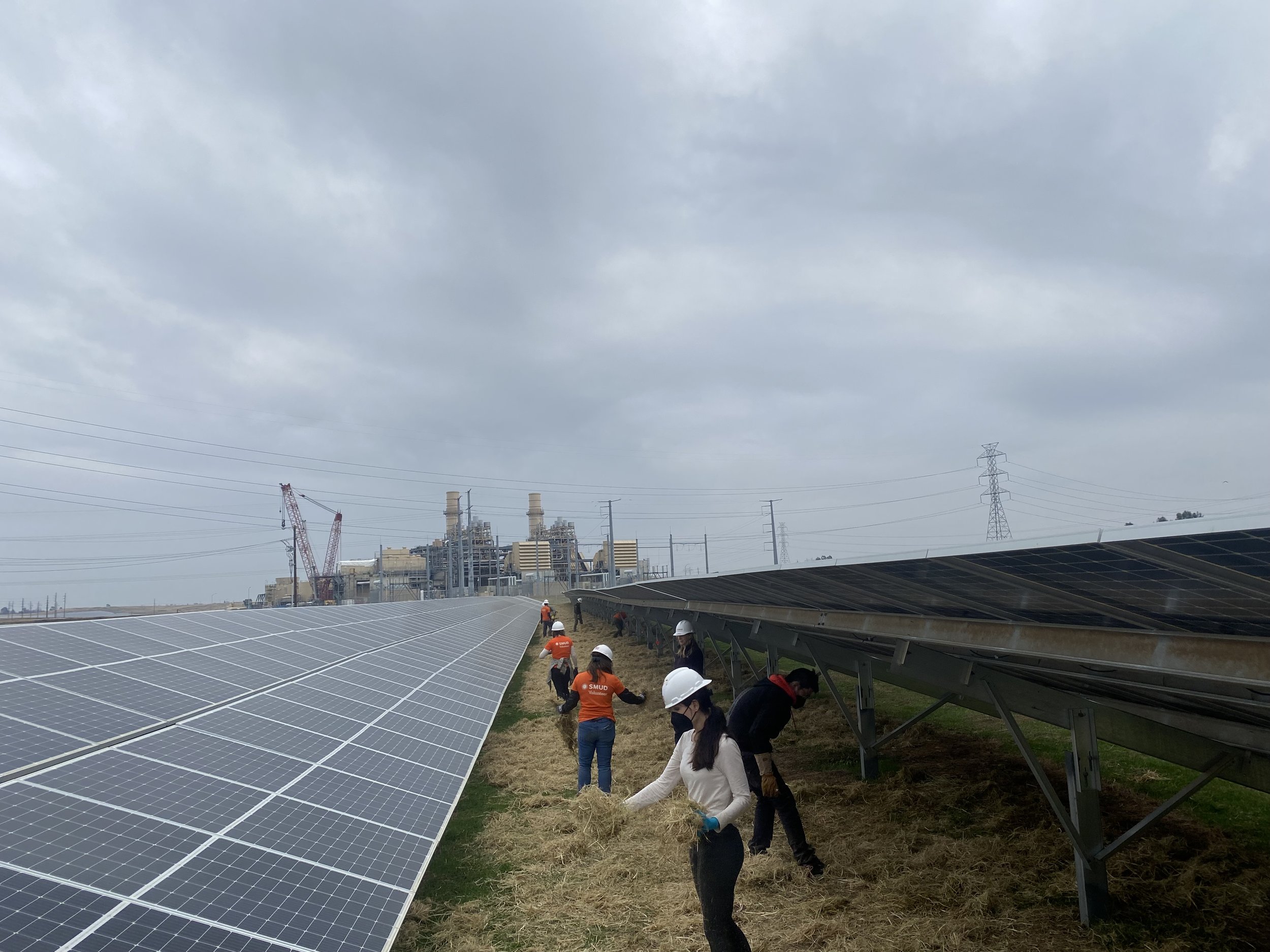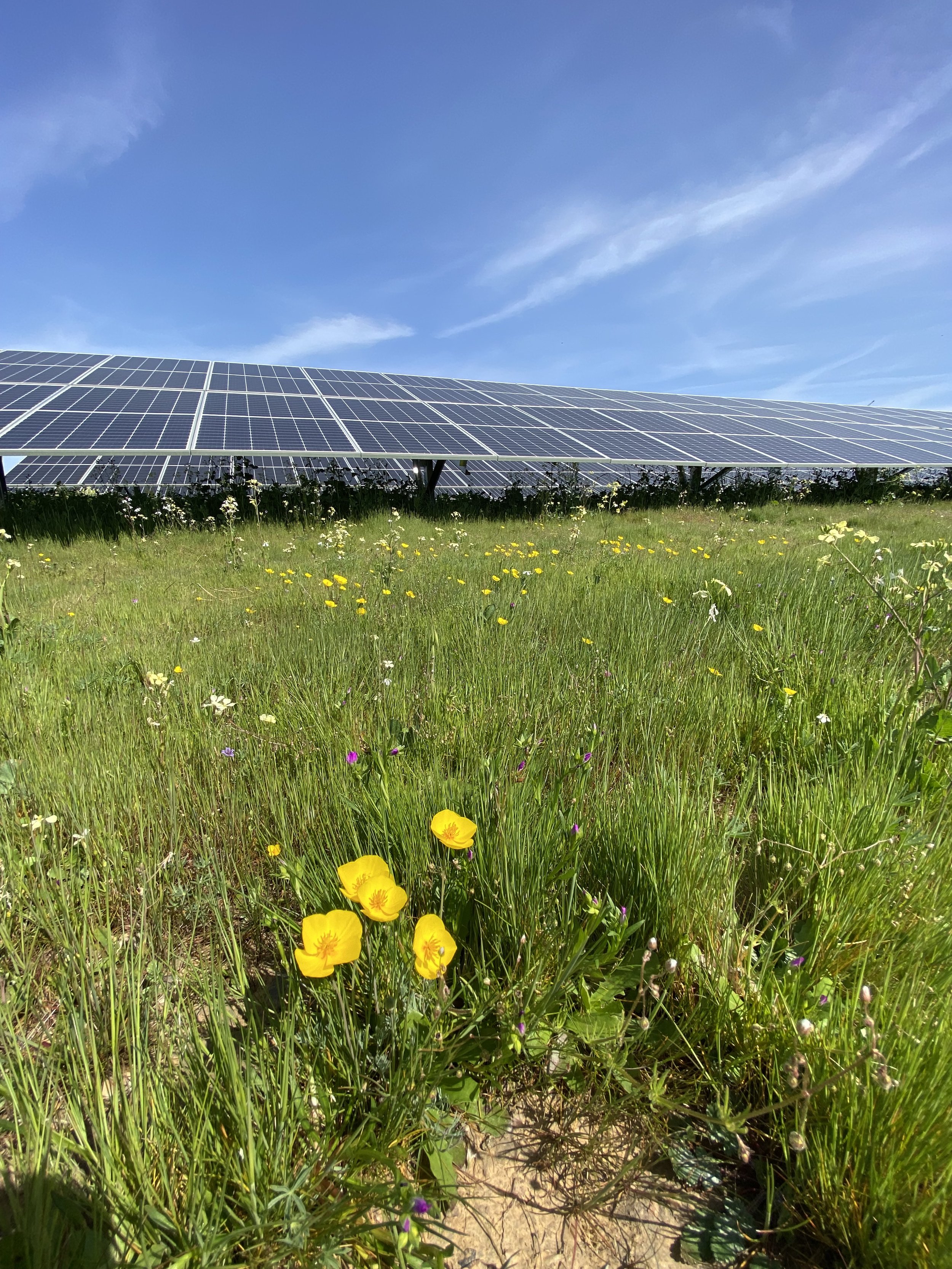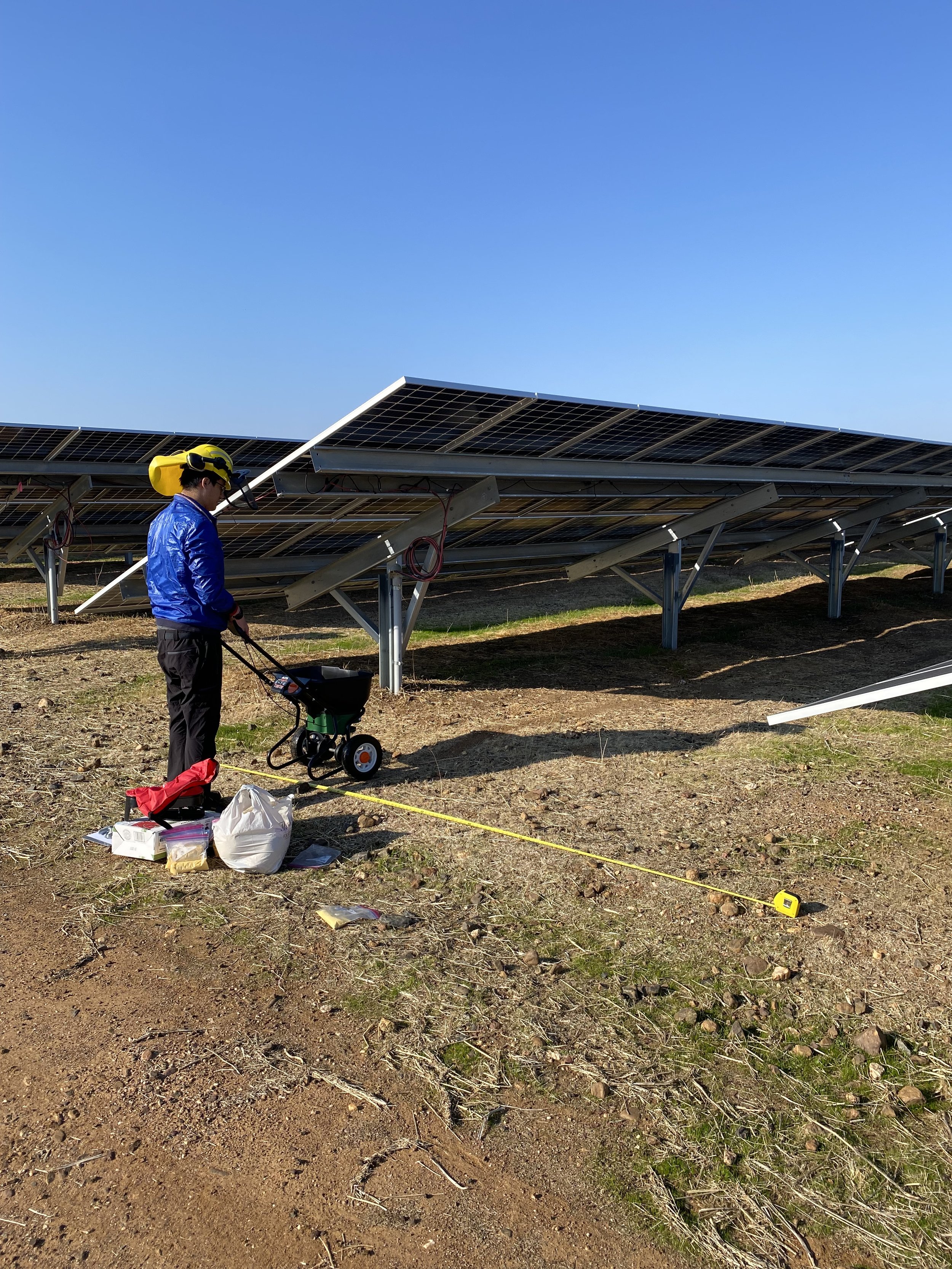Prof. Hernandez, Yudi Li, and partners work to restore California prairie and pollinators through a collaborative solar energy restoration project.
Ninety-five percent of the California prairie biome has been lost to agricultural development. It was once a sea of carbon sequestering wildflowers and grasses unlike any grassland ecosystem in the world.
But what if solar energy development could be used to bring it back? The Electric Power Research Institute and the Sacramento Municipal Utility District launched a collaborative project with the scientists at UC Davis Wild Energy and indigenous groups. Using 20 acres of land covered with ground-mounted photovoltaic solar energy near Sacramento, UC Davis scientists are determining ideal and commercially feasible native plant mixes to grow under solar panels to best aid pollinators and other native wildlife, all the while working together with United Auburn Indian Community to foster socio-ecological and energy benefits for the Sacramento Valley. Hernandez and Li are assessing the site’s habitat for pollinators and the federally protected California tiger salamander, characterizing the soil properties and carbon sequestration potential, and co-developing with Indigenous tribes projects that help ensure both energy and socio-ecological benefits at the site.
Prof. Hernandez hopes to create a model that solar energy developers, including farmers, across the Central Valley can follow. Part of Yudi Li’s research involved curating commercially available native plant seed mixes that fit a certain criteria and testing their response to the microhabitats that the solar energy infrastructure creates for the Northern California Central Valley region.
Solar energy developers often do not know what seeds to plant, when, and how, which can lead them to making poor decisions. Native plant restoration may reduce the enormous costs, liability, and missed opportunities for sustainability that comes with conventional site preparation and management.
“In the Central Valley, we are working to determine if solar energy development on former agricultural land can be combined with the restoration of California prairie. If it works, ecological benefits can abound.”




